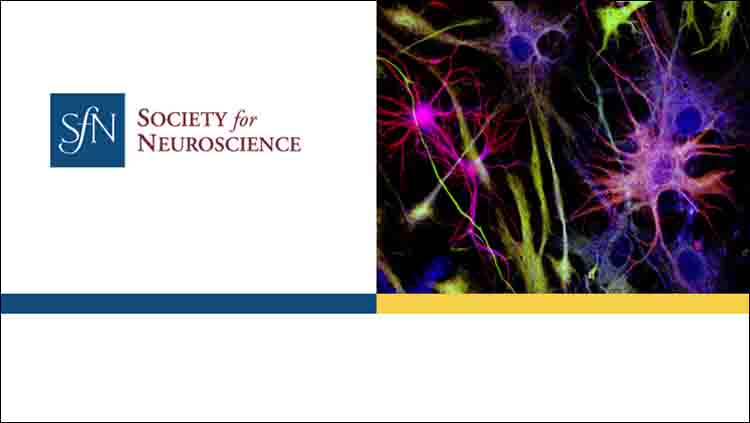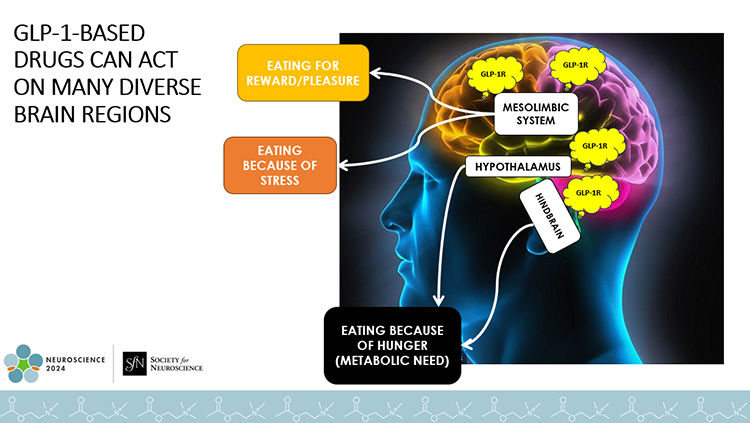Neuroscience 2024 Buzzes Into Chicago
Neuroscience 2024, the earliest SfN meeting in recent history, gathered the neuroscience community in Chicago for a warm, sunny week of scientific exchange. Buzzing with excitement, 22,359 attendees engaged over posters, socials, and kazoos October 5–9.
Chicago: A Windy… Convention Center
The annual meeting started off with the buzz of kazoos, courtesy of Susan Magsamen, the featured speaker at the 2024 Dialogues Between Neuroscience and Society Lecture, supported by the Dana Foundation. Magsamen’s presentation explored the science of neuroaesthetics, the study of how the arts and aesthetic experiences measurably change the brain and body. Every audience member received a kazoo to take part in a song (and show off to their colleagues after the lecture ended).
After the Dialogues lecture, attendees fanned out across the McCormick Place Convention Center. Amidst the 458 exhibitors in the Exhibit Hall, two Product Theaters offered 22 presentations by organizations introducing their products and services. Nearby, the SfN booth unveiled a new open floor plan design and featured kiosks with attendee information and a very popular interactive gamewhere players matched the JNeurosci and eNeuro cover images before the clock ran out. The SfN Store and Art of Neuroscience booths were as popular as ever, with the first SfN-produced Pride t-shirts selling out. Neuroscience 2024 was supported by many organizations, including three Gold sponsors (Johnson & Johnson, Ncardia, Nxera), three Silver sponsors, and four Bronze sponsors contributing to the overall meeting; more than 30 sponsors enabled individual lectures, events, and awards. All lectures and virtual posters remained available for registered attendees to view via the virtual component for a month after Neuroscience 2024 concluded in Chicago.
Late-Breaking Abstracts
One of the most notable features of Neuroscience 2024 was the introduction of late-breaking abstracts. This second abstract submission window allowed researchers with new and significant findings to submit their work closer to the annual meeting, ensuring the program reflected the latest advancements in neuroscience. The response was strong, with more than 850 submissions received. These late-breaking abstracts were showcased in a designated section of the bustling poster floor. The success of this initiative has already set the stage for its return next year, this time with a cap of 1,000 late-breaking abstract submissions and a higher abstract submission fee than the regular call for abstracts (May 21 – June 4).
Neuroscience News and Nobel Prize
Neuroscience presented at Neuroscience 2024 generated numerous headlines. Attracted by press-only events — some of which offer broad overviews of specific fields, while others dive deep into particular topics— more than 120 journalists produced stories in outlets such as Nature, NPR, and Forbes.
Neuroscience 2024 was held during Nobel Week, during which the 2024 Nobel Prizes were awarded. This year, the Nobel Prize in Physics was awarded to Professor John J. Hopfield at Princeton University and Professor Geoffrey E. Hinton at the University of Toronto, Canada, for their foundational discoveries and inventions that enable machine learning with artificial neural networks. Hopfield was the recipient of the 2012 SfN Swartz Prize for Theoretical and Computational Neuroscience, reinforcing the ways in which neuroscience is an integral part of the broader scientific enterprise.






















